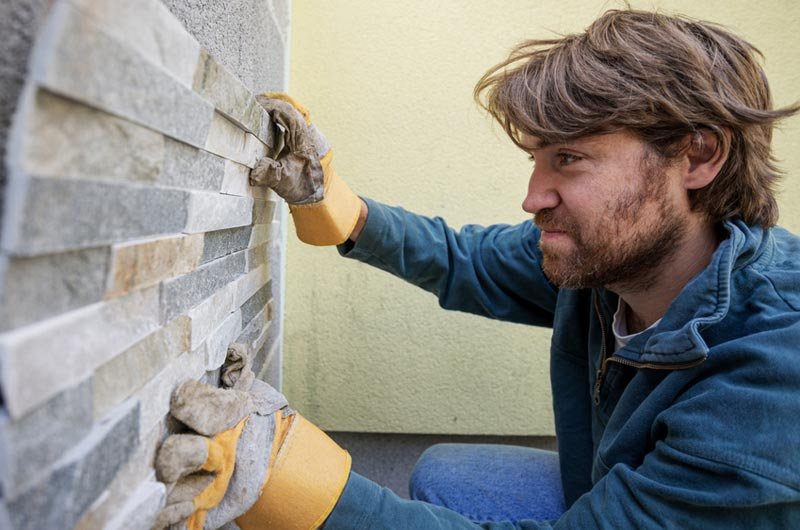Gestapelte Steinfurnierplatten Verleihen Sie Innen- und Außenräumen ein zeitloses, natürliches Aussehen. Bevor Sie mit der Installation beginnen, ist es wichtig, die Fläche genau auszumessen, um sicherzustellen, dass Sie die richtige Menge an Steinfurnier kaufen und so Mehrkosten oder Engpässe vermeiden. Dieser Leitfaden hilft Ihnen dabei, gestapelte Steinfurnierplatten effektiv zu messen.
Was ist Stacked Stone Veneer? Panels?
-
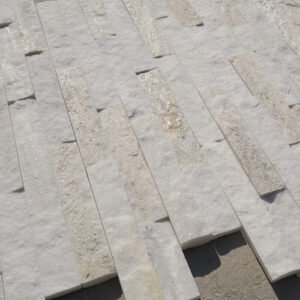 China neue Farben Quarzit gestapelte Steinplatten
China neue Farben Quarzit gestapelte Steinplatten -
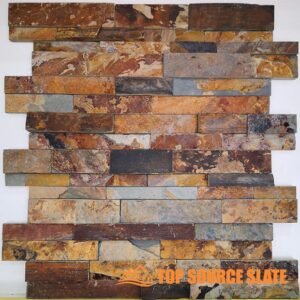 Grobe rostige Schiefertafel aus gestapelten Steinen, 6 Zoll x 24 Zoll.
Grobe rostige Schiefertafel aus gestapelten Steinen, 6 Zoll x 24 Zoll. -
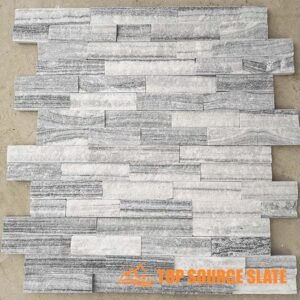 Rohe Grundplatte aus gestapeltem Stein in Alaska-Grau, 6 Zoll x 24 Zoll.
Rohe Grundplatte aus gestapeltem Stein in Alaska-Grau, 6 Zoll x 24 Zoll. -
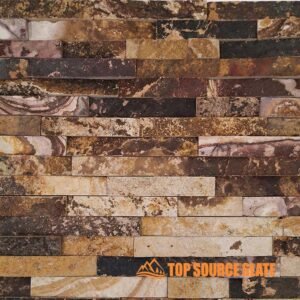 Gestapelte Steinplatte aus rauem Sandstein, 6 Zoll x 24 Zoll.
Gestapelte Steinplatte aus rauem Sandstein, 6 Zoll x 24 Zoll. -
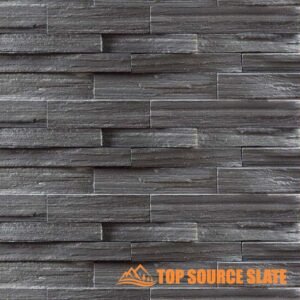 Rohe Hauptbuchplatte aus natürlichem schwarzem Schiefer, 6 Zoll x 24 Zoll.
Rohe Hauptbuchplatte aus natürlichem schwarzem Schiefer, 6 Zoll x 24 Zoll. -
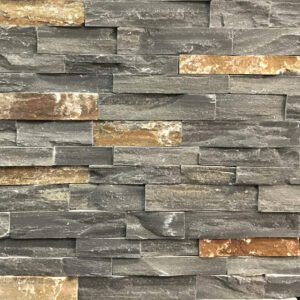 Sierra Blue Ledger Panel 6 Zoll x 24 Zoll Naturstein Quarzit
Sierra Blue Ledger Panel 6 Zoll x 24 Zoll Naturstein Quarzit -
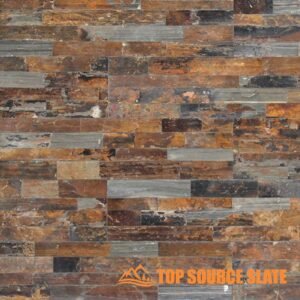 Natursteinplatten aus kalifornischem Goldschiefer – 6 x 24
Natursteinplatten aus kalifornischem Goldschiefer – 6 x 24 -
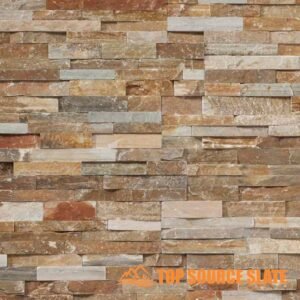 Goldenes Ernte-Schiefertafel-Hauptbuch – 6 x 24
Goldenes Ernte-Schiefertafel-Hauptbuch – 6 x 24
-
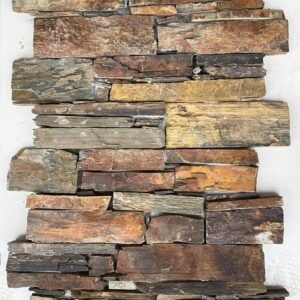 Außenverkleidung aus Naturstein zum Großhandelspreis
Außenverkleidung aus Naturstein zum Großhandelspreis -
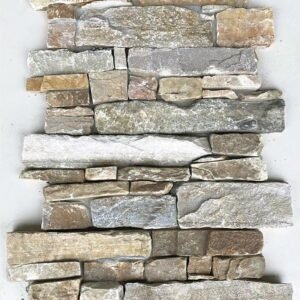 Oyster Quartz Z Stone Platten 550 x 200
Oyster Quartz Z Stone Platten 550 x 200 -
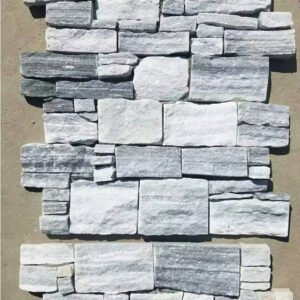 Bewölkte graue Z-förmige Verkleidungsplatten aus Quarz-Naturstein
Bewölkte graue Z-förmige Verkleidungsplatten aus Quarz-Naturstein -
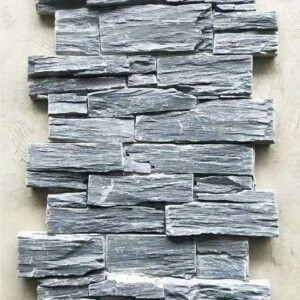 Z-Panel-Verkleidung aus schwarzem Schiefer
Z-Panel-Verkleidung aus schwarzem Schiefer -
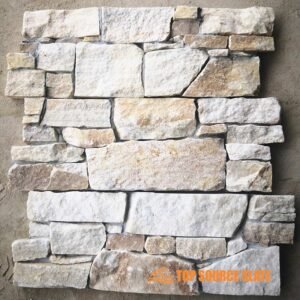 Verkleidung aus natürlichem weißem Quarzstein
Verkleidung aus natürlichem weißem Quarzstein -
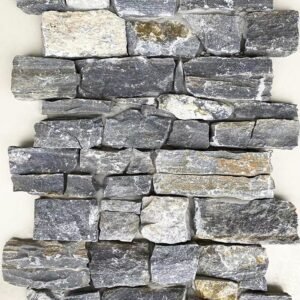 Blaue Diamantquarzsteinverkleidung für die Außenwanddekoration
Blaue Diamantquarzsteinverkleidung für die Außenwanddekoration -
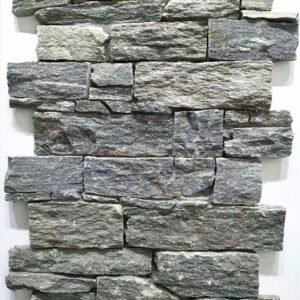 Verkleidungsplatten aus grünem Quarz-Naturstein
Verkleidungsplatten aus grünem Quarz-Naturstein -
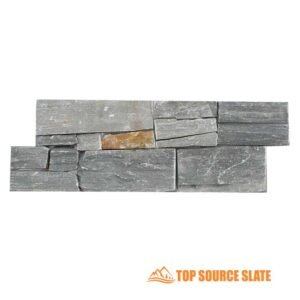 Natürliche Z-Steinplatten aus chinesischer Fabrik
Natürliche Z-Steinplatten aus chinesischer Fabrik
Gestapelte Steinfurnierplatten sind in verschiedenen Größen und Ausführungen erhältlich und bieten eine unterschiedliche Abdeckung pro Panel. Einige Panels bieten beispielsweise eine Abdeckung von 3,13 Quadratfuß. Das Verständnis dieser Messung ist entscheidend für die Berechnung der Anzahl der Paneele, die Sie für Ihr Projekt benötigen. Sehen Sie sich die Richtlinien des Herstellers für die genauen Abmessungen und die Abdeckung der Paneele an.
Messen Sie die flache Oberfläche
Das genaue Messen der Höhe und Länge der Wand ist wichtig, um sicherzustellen, dass Sie die richtige Menge an Steinfurnier berechnen. Befolgen Sie diese Schritte:
Messen Sie Wandlänge und -höhe
- Verwenden Sie ein Maßband: Messen Sie zunächst die Höhe der Wand von der Basis bis zur Oberseite, typischerweise vom Boden bis zur Decke (bei Innenwänden) oder vom Boden bis zur Dachlinie (bei Außenwänden). Runden Sie die Höhe auf den nächsten Zoll oder Fuß ab.
- Notieren Sie die Länge: Als nächstes messen Sie den horizontalen Abstand von einem Ende der Wand zum anderen. Stellen Sie sicher, dass Sie die gesamte Länge aufzeichnen, einschließlich aller Ecken, in denen gestapelte Steine installiert werden.
- Umgang mit unregelmäßigen Wänden: Wenn die Oberfläche schräge Wände oder Nischen umfasst, unterteilen Sie die Oberfläche in kleinere Abschnitte und messen Sie jeden einzeln. Addieren Sie diese Maße, um die Gesamtlänge und -höhe der Wand zu erhalten.
- Mehrere Wände: Bei Projekten mit mehreren Wänden wiederholen Sie diesen Vorgang für jede Oberfläche, die mit gestapeltem Steinfurnier bedeckt werden soll. Behalten Sie die Abmessungen jeder Wand separat im Auge, um Verwirrung während der Installationsphase zu vermeiden
Berechnen Sie die Quadratmeterzahl
Die Berechnung der Quadratmeterzahl ist für die Bestimmung der für Ihr Projekt erforderlichen Gesamtabdeckung von entscheidender Bedeutung. Nachdem Sie die Höhe und Länge gemessen haben, gehen Sie folgendermaßen vor:
- Länge mit Höhe multiplizieren: Um die Gesamtquadratmeterzahl jeder Wand zu ermitteln, multiplizieren Sie die Höhe mit der Länge der Wand. Wenn eine Wand beispielsweise 10 Fuß hoch und 15 Fuß lang ist:
- 10 Fuß × 15 Fuß = 150 Quadratfuß.
- Öffnungen subtrahieren: Wenn Fenster, Türen oder andere große Öffnungen vorhanden sind, subtrahieren Sie deren Fläche von der Gesamtquadratmeterzahl. Messen Sie dazu die Höhe und Breite der Öffnung und multiplizieren Sie diese, um die Fläche zu ermitteln. Wenn ein Fenster beispielsweise 3 x 4 Fuß groß ist:
- 3 Fuß × 4 Fuß = 12 Quadratfuß.
- Subtrahieren Sie dies von der gesamten Quadratmeterzahl der Wand:
- 150 Quadratfuß − 12 Quadratfuß = 138 Quadratfuß
- 3 Fuß × 4 Fuß = 12 Quadratfuß.
- Wiederholen Sie diesen Vorgang für mehrere Wände: Wenn Sie mehrere Wände verkleiden, wiederholen Sie diesen Vorgang für jede einzelne und addieren Sie die Quadratmeterzahl, um die Gesamtfläche zu ermitteln.
- Fügen Sie einen Puffer hinzu: Fügen Sie immer 5–10 % hinzu, um Schnittfehler, Abfall und Fehlkalkulationen zu berücksichtigen. Wenn Ihre Gesamtquadratfläche beispielsweise 138 Quadratfuß beträgt, bestellen Sie mit einem Puffer von 10 % ausreichend Material, um Folgendes abzudecken:
- 138 Quadratfuß × 1,10 = 151,8 Quadratfuß
Wenn Sie diese Schritte befolgen, können Sie sicherstellen, dass Sie eine genaue Schätzung des für Ihr Projekt erforderlichen Steinfurniers erhalten
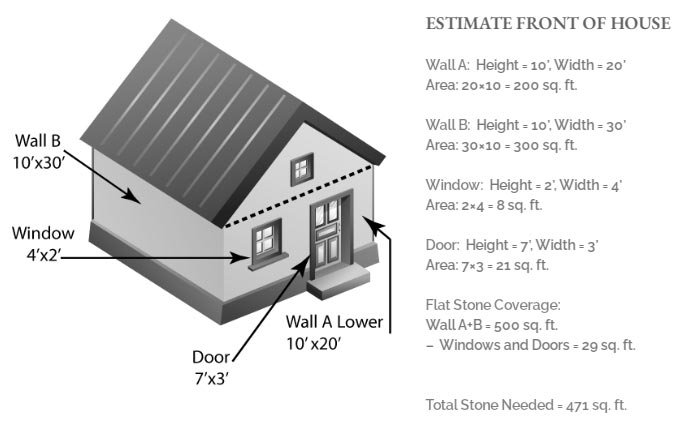
Öffnungen und Hindernisse
Bei Fenstern, Türen oder anderen Unterbrechungen subtrahieren Sie deren Fläche von der Gesamtsumme. Messen Sie jeweils die Breite und Höhe, multiplizieren Sie sie und subtrahieren Sie sie dann von der Gesamtquadratmeterzahl. Wenn eine Tür beispielsweise 3 Fuß breit und 7 Fuß hoch ist:
3 ft × 7 ft = 21 sq. ft.Subtrahieren Sie dies von Ihrer gesamten Wandfläche.
Verschwendungspuffer
Fügen Sie immer 5-10 % mehr Material hinzu, um Schnitte, Fehler und unregelmäßige Oberflächen auszugleichen. Dies stellt sicher, dass Sie im Falle von Fehlern bei der Installation über zusätzliches Steinfurnier verfügen.
Berechnen der Gestapeltes Steinfurnier Panels Ecken
Wenn Ihr Projekt Innen- oder Außenecken umfasst, müssen Sie Ecksteine berücksichtigen, die sich hinsichtlich der Abdeckung von Flachpaneelen unterscheiden. Ecksteine werden in linearen Fuß gemessen, da sie die vertikale Kante von Wänden abdecken.
Berechnung des linearen Filmmaterials für Eckplatten:
- Messen Sie die Höhe jeder Ecke und sammeln Sie die Messungen für alle Außenecken, um die gesamten linearen Füße zu erhalten. Zum Beispiel, wenn eine Ecke 10 Fuß groß ist:
Eckhöhe = 10 ft
- Multiplizieren Sie das gesamte lineare Filmmaterial mit der Umrechnungsrate des Herstellers für Eckpaneele. Typischerweise entspricht 1 linearer Fuß der Eckdecke 0,67 Quadratfuß Flachplattenabdeckung. Abziehen Sie dies von der gesamten flachen Fläche, um eine Doppelzählung zu vermeiden.
Zum Beispiel, wenn Sie 10 Fuß Eckdecke haben:
10 lineare Füße × 0,67 = 6,7 m² ft.
Subtrahieren Sie dies von der gesamten flachen Fläche, um eine genauere Materialschätzung zu erhalten
Bleiben Sie Ledger und Trimmen ein
Riegel werden oft verwendet, um Täfelungsinstallationen abzudecken oder einen dekorativen Abschluss entlang der Oberkante einer Steinmauer zu schaffen. Messen Sie die linearen Füße für Riegel auf die gleiche Weise, wie Sie flache Wände messen:
- Messen Sie die horizontale Länge dort, wo die Riegel installiert werden sollen.
- Multiplizieren Sie diese Länge mit 12, um Fuß in Zoll umzurechnen.
- Teilen Sie es durch die Länge einer Hauptbuchplatte, um zu bestimmen, wie viele Sie benötigen.
Wenn beispielsweise die Gesamtlänge der Hauptbücher 65 Fuß beträgt und ein Hauptbuchpanel 42 Zoll abdeckt:
(65 Fuß × 12 Zoll) ÷ 42 Zoll = 18,57 Hauptbuchplatten
Runden Sie stets auf, um möglichen Abfall oder Schnittfehlern Rechnung zu tragen.
Installationsrichtlinien für gestapelte Steinfliesen
So installieren Sie Stapelsteine oder Leistensteine
So installieren Sie einen gestapelten Steinkamin
So bauen Sie eine Trockenmauer aus Stein
Konto für Verschwendung
Es ist immer ratsam, 5–10 % mehr Steinfurnierplatten zu kaufen, als Ihre Berechnungen vermuten lassen. Dieser Überschuss ist für etwaige Brüche, Schnittfehler oder Unregelmäßigkeiten bei der Installation verantwortlich. Wenn Ihr Projekt beispielsweise 100 Paneele erfordert, sollten Sie weitere 5–10 Paneele kaufen, um sicherzustellen, dass Sie genug haben.
Berücksichtigen Sie Fenster, Türen und andere Hindernisse
Bei Bereichen mit Fenstern, Türen, Schaltkästen oder anderen Hindernissen könnten Sie versucht sein, diese Hohlräume von Ihrer Gesamtmessung abzuziehen. Es ist jedoch am besten, diese Leerzeichen nicht von Ihrer Gesamtberechnung abzuziehen. Oft benötigen Sie zusätzliches Material, um diese Hindernisse zu umgehen, und mit ein paar zusätzlichen Platten können Sie die Arbeit erledigen, ohne dass Ihnen das Material ausgeht.
Letzte Tipps für den Erfolg
- Beginnen Sie Ihre Installation immer in einer Ecke, um ein sauberes, versetztes Erscheinungsbild zu gewährleisten.
- Wenn Ihr Projekt Eckpaneele umfasst, denken Sie daran, dass jedes Eckpaneel in der Höhe zwei gestapelten Flachpaneelen entspricht.
- Wenn Sie für Hauptbücher rechnen, subtrahieren Sie jeweils ein gerades Hauptbuch für jeweils zwei Eckhauptbücher.
Abschluss
Genau messen für gestapelte Steinfurnierplatten ist entscheidend, um einen reibungslosen Installationsprozess zu gewährleisten und kostspielige Verzögerungen zu vermeiden. Durch sorgfältige Planung und genaue Messungen können Sie sicherstellen, dass Sie die richtige Materialmenge für Ihr Projekt bestellen. Runden Sie bei der Berechnung der Anzahl der Paneele immer auf und berücksichtigen Sie zusätzliches Material, um Verschwendung oder Fehler abzudecken.
Wenn Sie suchenHersteller und Lieferanten von gestapelten SteinenWir empfehlen Ihnen, unsere Produkte zu überprüfen.
Wir verfügen über mehr als 15 Jahre Exporterfahrung und bieten Muster vor Auftragserteilung an.
Wenn Sie weitere Hilfe benötigen oder etwas Individuelles besprechen möchten, wenden Sie sich bitte an unskontaktiere uns jederzeit.
Und wir würden gerne unser Fachwissen teilen, um auch Ihnen zu helfen!

